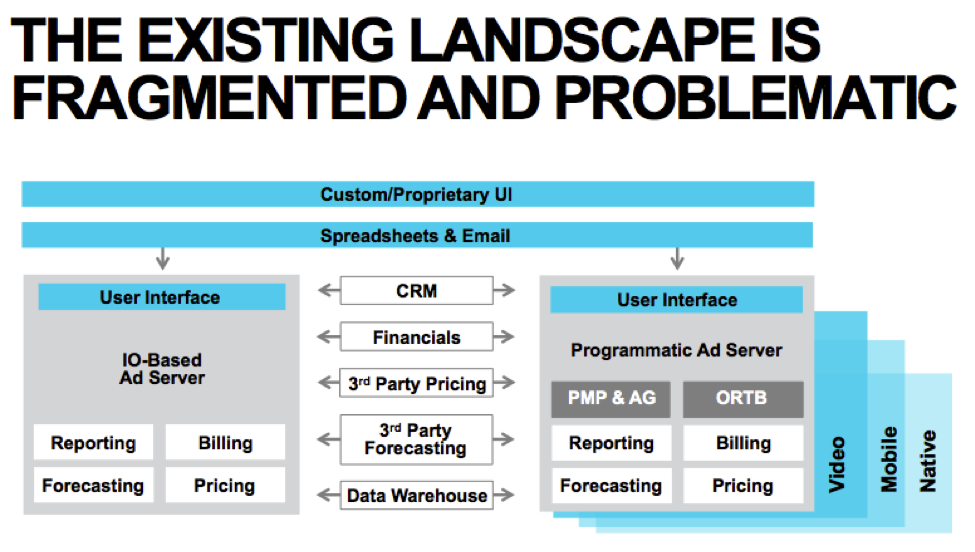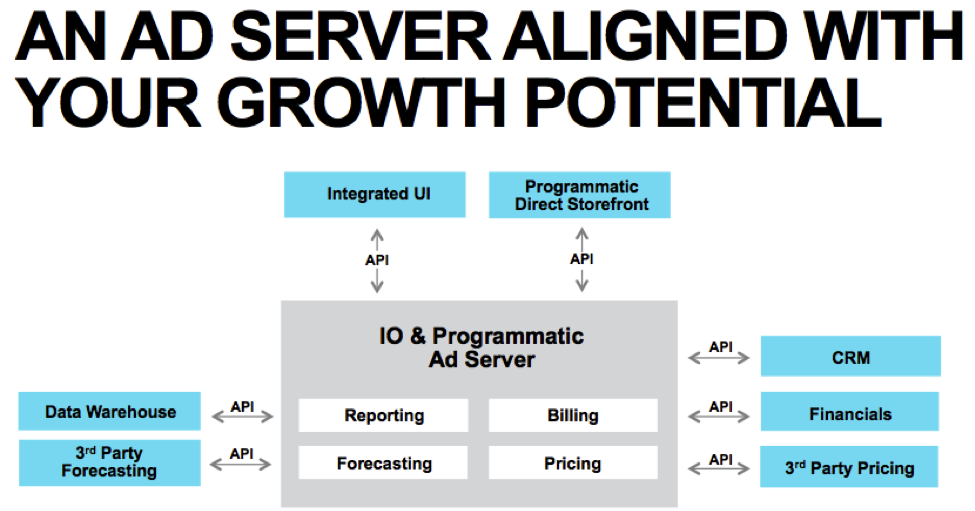When it comes to the current state of ad serving, Gavin Dunaway, the Senior Editor of AdMonsters, said it best: “It’s time to shift our focus from workarounds to a long-term solution. And that involves reconsidering how the ad server operates.”
It’s true: efforts to keep pace with more impressions, more technology, more touch points, and the level of relevancy required by consumers led to a highly fragmented technology stack that continues to fall short of publishers’ needs. As new screens, formats and channels are added the infrastructure only becomes more cumbersome. In fact, current ad serving solutions have evolved from complex (and expensive) to actually inhibiting revenue growth for publishers.

In light of all of this complication and chaos, we want to address three of the biggest challenges facing publishers in the digital media ecosystem today—managing fragmented inventory, optimizing across demand channels, and overcoming difficult system integrations—and PubMatic is developing solutions to help solve for each of them.
Challenge #1: Managing fragmented inventory.
According to research from Winterberry Group, on average marketers use more than 12 different tools—and some as many as 31 or more—to manage campaigns and data[1]. We all know that publishers face this same challenge, as complexity is evident across the entire digital ecosystem.
With that in mind, take a look at the diagram above. Let’s assume that publishers have different log-ins, UIs, and workflows for IO-based, programmatic, native, mobile and video campaigns (which clearly is a reality for many companies). Now imagine you’re in Ad Ops creating campaigns, managing inventory, doing optimizations, and configuring channels… the resulting amount of time spent learning and leveraging various solutions is staggering.
Imagine the time you’d save if you could do all of this from one location.
That’s where our Unified Ad Server comes in. We built it from the ground up with the goal of simplifying the workflow associated with managing both programmatic and non-programmatic demand, various screens, and ad formats—all from a single dashboard.

Challenge #2: Optimizing across demand channels.
You might be thinking ‘Great, I can see all my inventory in one place, but what good is that if I can’t optimize across those various sales channels?’ Publishers are looking to increase monetization, and with existing solutions they’ve had to do a bit of guesswork to determine how to best do that. Until recently, no easy, simple option existed for optimizing across demand channels, despite the importance of the ability to do so on publishers’ bottom line.
In a discussion on the topic at a recent PubAcademy, the head of revenue operations for a large, US-based media company described how his organization uses a combination of tech partners and tools (as many as eight or nine in some scenarios) to address this issue: “We do allow our indirect revenue sources—whether associated with private exchange deals or open exchange deals, to compete with and even trump our direct sold campaigns.”
At PubMatic, we believe not only in giving publishers as much control as possible, but also offering simple solutions for complex challenges. With our Unified Ad Server publishers can decide if and how much programmatic demand like open market RTB and private marketplaces competes with direct sold campaigns (i.e. guaranteed line items)— and to do so on an impression-by-impression basis. Publishers can determine which direct line items they want programmatic to compete with, the degree of impact on higher priority line items they’re willing to accept, and weigh that against the potential monthly revenue upside.
Feedback from Bonnier Tidskrifter, an early adopter of our Unified Ad Server, highlights the importance of addressing these major publisher pain points. “It’s great to see companies like PubMatic developing the ability for publishers like us to optimize revenue across channels,” said Bonnier Tidskrifter Head of Programmatic Stefan Carlsson, “Especially without sacrificing guarantees.”
Challenge #3: Difficult system integrations.
Given all of the challenges and complications we’ve discussed thus far, is it at all surprising that another major publisher challenge has to do with the difficulty of trying to integrate with different partners and navigate the “ins and outs” of using various systems?
Since our inception in 2006, PubMatic has been focused on publishers’ needs, and we believe that the ability to leverage the insights and expertise that publishers have built over the lifetime of their business is invaluable in differentiating themselves and succeeding in today’s marketplace. That’s one reason why we built our Unified Ad Server as part of our customizable, modular solution. We want publishers to continue to use their proprietary workflows, systems, and in-depth knowledge of their own businesses to truly establish a competitive advantage in the crowded digital media ecosystem.
As one industry expert recently commented at a PubMatic PubAcadmey, featuring header bidding-related content, “There’s a need in the market for a more progressive ad serving solution than DFP.” At PubMatic, we certainly agree, and we encourage you to take a few minutes to find out more about our Unified Ad Server and all of the other components of our revenue management platform, SEVEN.
[1] “Too Many Tools? New Data on the Complexity of Marketing Technology,” HubSpot Blog. 15 Feb. 2015.

